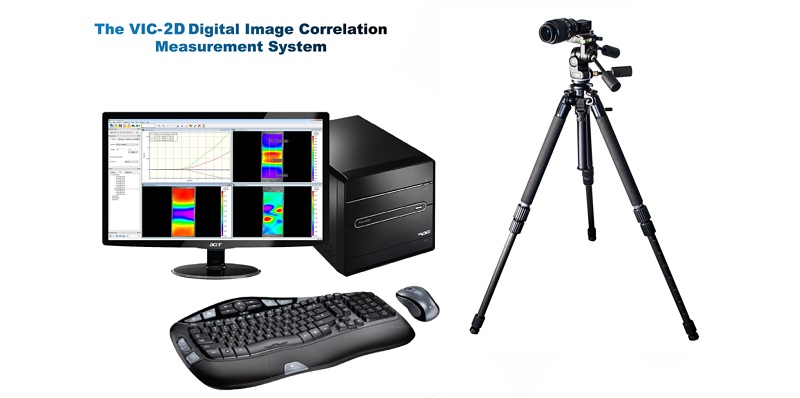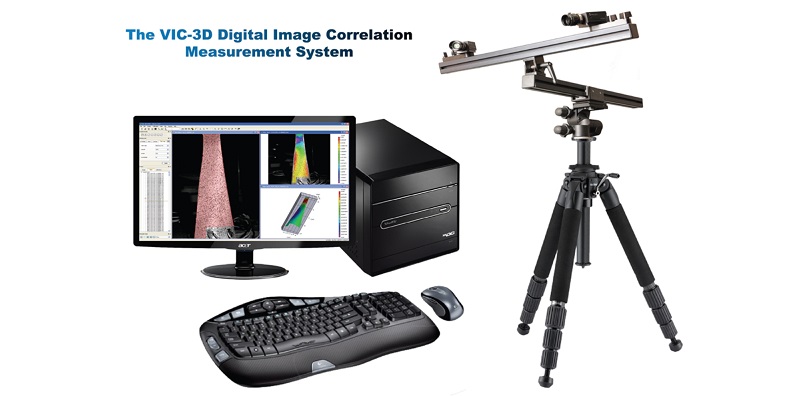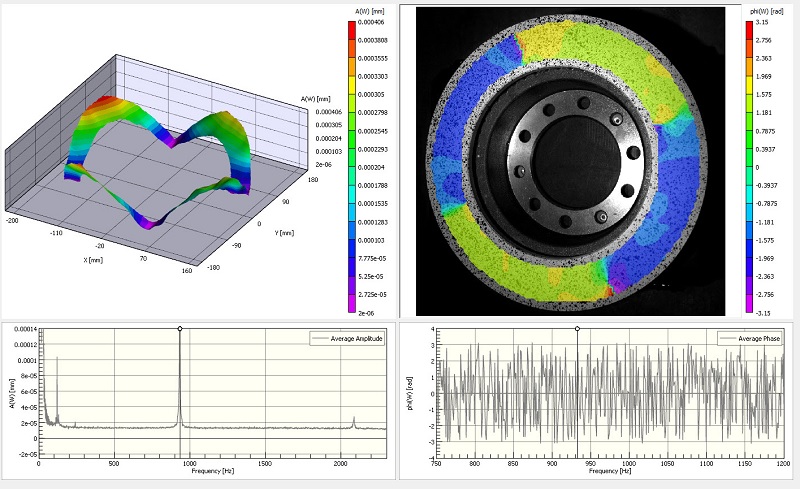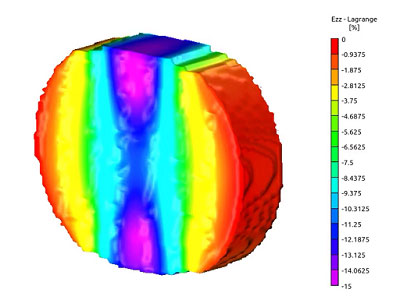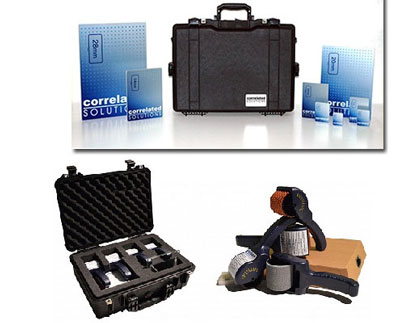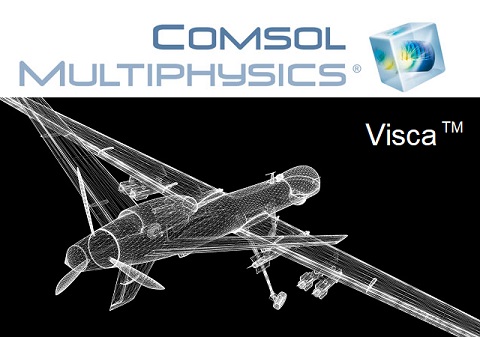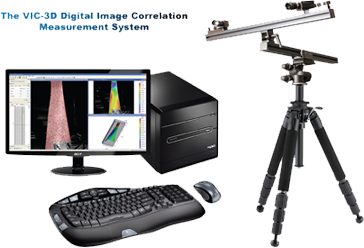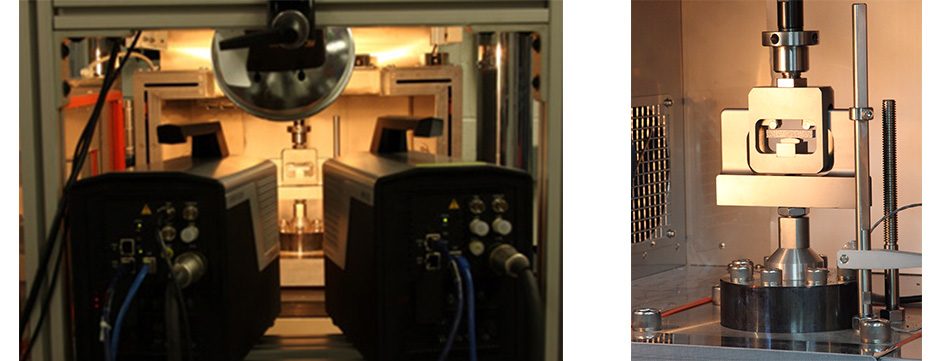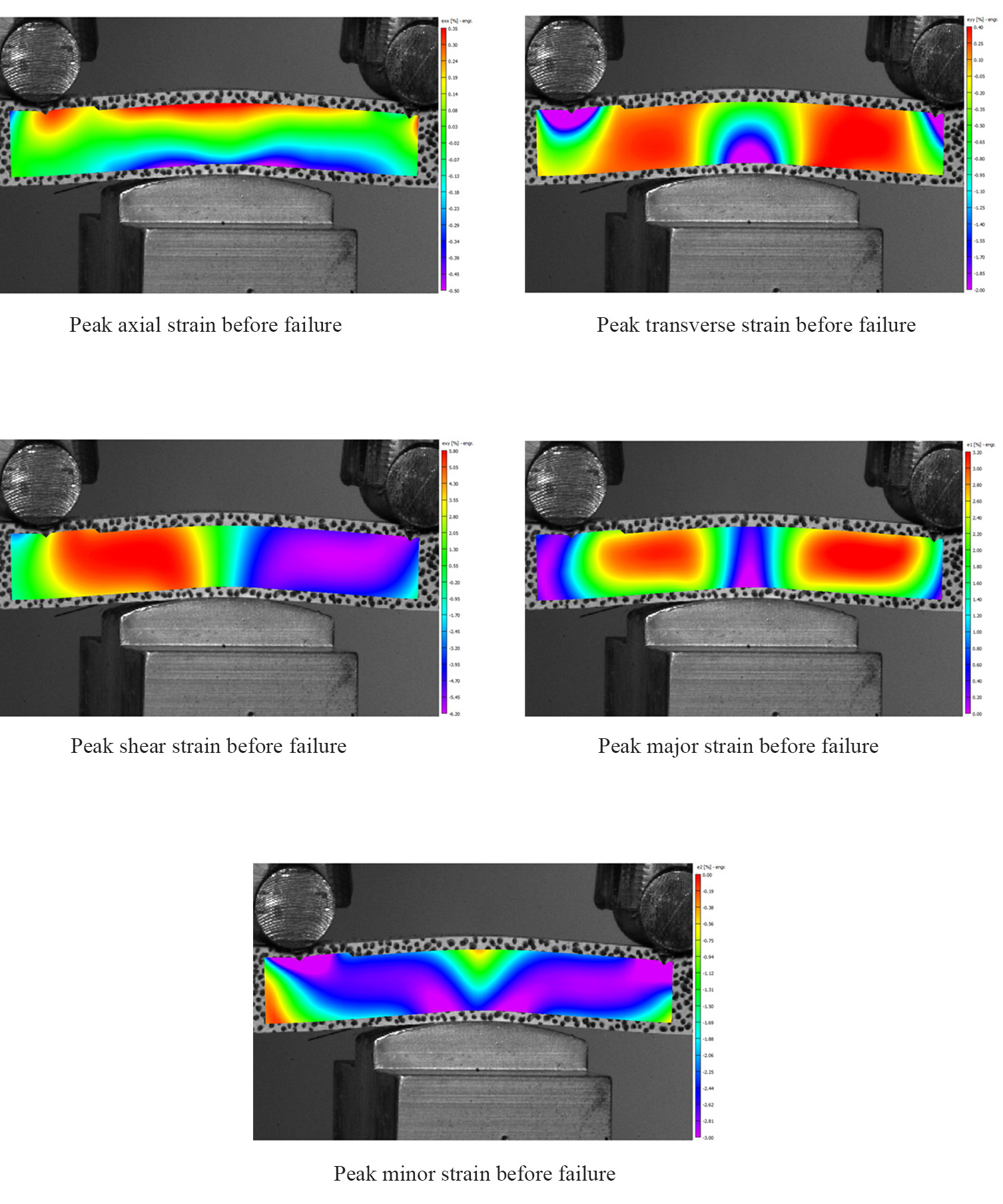复合材料短梁剪切的超高速测试 VIC-3D Ultra High-Speed Short Beam Test
德州大学阿灵顿分校(UTA)机械与航空航天工程系的教授Andrew Makeev和研究工程师Brian Shonkwiler运营着一个动态DIC测试实验室。他们一起进行了各种DIC测试,从准静态测试到超动态测试。在该特定示例中,UTA正在利用VIC-3D UHS-HPVX2系统来测量玻璃/环氧树脂材料的动态特性。此短梁剪切测试的目的是测量材料的多种力学属性,例如剪切和轴向模量以及剪切强度。
Prof. Andrew Makeev and Research Engineer Brian Shonkwiler at the University of Texas Arlington Mechanical and Aerospace Engineering department operate a dynamic DIC testing laboratory. Together they conduct a variety of DIC tests ranging from quasi-static to extremely dynamic testing. In this particular example, UTA are utilizing the VIC-3D UHS-HPVX2 system to measure dynamic properties of a glass/epoxy material. The purpose of this Short Beam Shear test is to measure multiple material properties such as shear & axial modulus, and shear strength.
Correlated Solutions提供的交钥匙系统包括两台Shimadzu HPV-X2超高速图像采集器,可通过Correlated Solutions的VIC-Snap UHS采集软件方便地进行控制,以在试验过程精确获取图像并下载,然后用VIC-3D进行后处理。该测试的帧速率高达666,667帧/秒(曝光时长200纳秒)。使用永久性标记材料对试样进行散斑制作,并使用超高亮度的频闪仪对试样照明。冲击速度为10m/s,试样破坏时达到约3.5%的剪切应变,耗时约100微秒。
The turnkey system from Correlated Solutions includes two Shimadzu HPV-X2 cameras which are conveniently controlled with Correlated Solutions’ software VIC-Snap UHS. The images are acquired during the event, downloaded, and then post-processed with VIC-3D. The frame rate for this test was 666,667 FPS with a 200 nano exposure. The specimen was speckled using a permanent marker, and an extremely bright stroboscope was used to illuminate the specimen. The impact velocity was 10 m/s, and the specimen reached approximately 3.5% shear strain at failure, which took approximately 100 microseconds.
正如Mr. Shonkwiler先生所说:“冲击试验的目的是获取材料的动态特性与静态特性之间的差异。使用VIC-3D系统的重要性在于可以准确的测量试样表面急剧的应变梯度变化,而使用应变计却让我们永远无法得到这些信息。”
As Mr. Shonkwiler states, “The purpose of the impact test is to determine how the dynamic characteristics of the material properties differ from the static properties. The importance of using the VIC-3D system is the fact that there are steep strain gradients on the face of the specimen. We would never get the strain information we need using a strain gage.
“DIC正在成为更有效的获取材料特性的方法。标准测试方法需要进行许多不同类型的测试,这些测试通常需要使用相对较大的试样。而短梁剪切试样很小,这样一小块面板就可以制作数百个试样。 此外,由于复合材料的各向异性,因此材料特性可能会在1-2、1-3和2-3平面上变化。我们可以通过简单地以不同方向从面板切割小尺度试样或通过仅翻转它即可获得所有三个方向的属性,因此DIC一直是我们重要的研究工具,因为它更有助于我们了解这些复杂材料的行为。由于该技术具有的全场数据特性,因此细节非常丰富。该技术对需要测量复合材料性能的任何行业都具有非凡的价值。”
DIC is enabling a more efficient means of finding material properties of materials. The standard test methods require many different types of tests that often use relatively large specimens. The short beam shear specimen is small, which allows one to make hundreds of specimens from a small panel. Additionally, since composites are not isotropic, the material properties can vary from the 1-2, 1-3, and 2-3 planes. We can get properties from all three planes by simply cutting the short beam specimen from the panel at a different orientation or by flipping it, and so DIC has been an essential tool for our research as it helps us understand the behavior of these complex materials in great detail due to the full-field nature of the technology. This technology will be useful for any industry which needs composite materials properties.”
Below is an animation created in VIC-3D from the test data showing the first principle strain (e1) vs. time (ms) at the two extracted points P0 and P1.
* Data Courtesy of Prof. Andrew Makeev from University of Texas Arlington
航空应用案例 Aviation Application Example
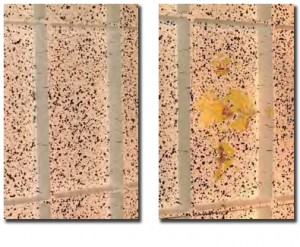 空客公司在创新型飞机方面享有盛誉,因其安全和高效而被世界各地认可。所有这些属性都是由一流的测试程序驱动的,其创新实践也可以通过使用VIC-3D测量系统得到实证。
空客公司在创新型飞机方面享有盛誉,因其安全和高效而被世界各地认可。所有这些属性都是由一流的测试程序驱动的,其创新实践也可以通过使用VIC-3D测量系统得到实证。
Airbus has built a reputation for innovative aircraft, recognized around the world for their safety and efficiency. All of these attributes are driven by a top-notch testing program, whose innovative practice are evidenced by their use of the VIC-3D measurement system.
空中客车测试计划的目标之一是确定飞机与小型抛射物(如鸟类和其他地面碎片)之间碰撞造成的结构损伤影响,并确保飞机的结构完整性得以维持。
One of the goals of the Airbus testing program is to characterize the structural damage caused by collisions between the aircraft and small projectiles such as birds and other ground based debris, and to ensure that the structural integrity of the aircraft is maintained.
这种类型的事件可以通过在飞机结构上以高速发射各种不同类型的抛射体来再现。所得结果可用于与冲击载荷下的结构计算机模型进行比较,从而产生更高度优化和更安全的设计。
This type of event can be reproduced by firing a variety of different types of projectile at a piece of aircraft structure at a high velocity. The results obtained can be used to compare with computer models of the structure under impact loads, leading to more highly optimized and safer designs.
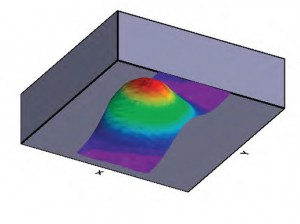 自1997年以来就职于英国空客公司的实验力学专家Richard Burguete博士解释了这种方法的好处:“VIC-3D系统使我们确信我们已经获得了所有相关数据,而其中一部分可能是其他方法无法替代的。”
自1997年以来就职于英国空客公司的实验力学专家Richard Burguete博士解释了这种方法的好处:“VIC-3D系统使我们确信我们已经获得了所有相关数据,而其中一部分可能是其他方法无法替代的。”
Dr. Richard Burguete, experimental mechanics specialist at Airbus UK since 1997, explains the benefits of this approach as follows: “The VIC-3D system allows us to be sure we have captured all of the relevant data, some of which might have otherwise been unobtainable.”
View the VIC-3D system for more information about this technology.

